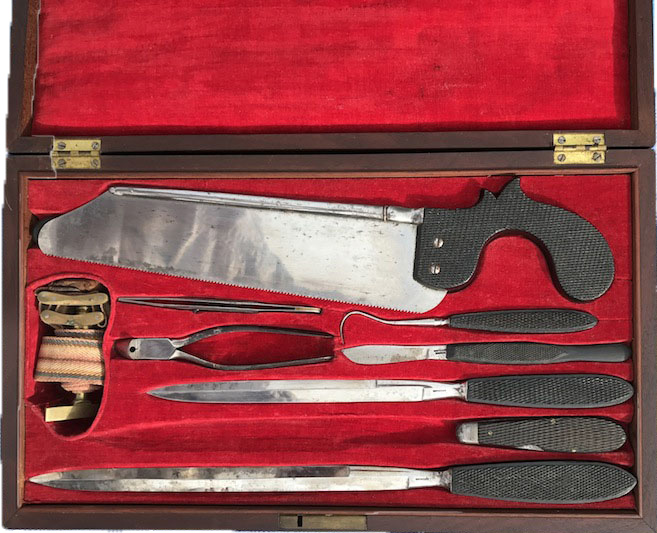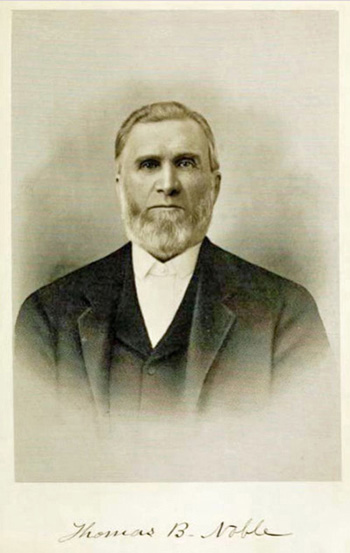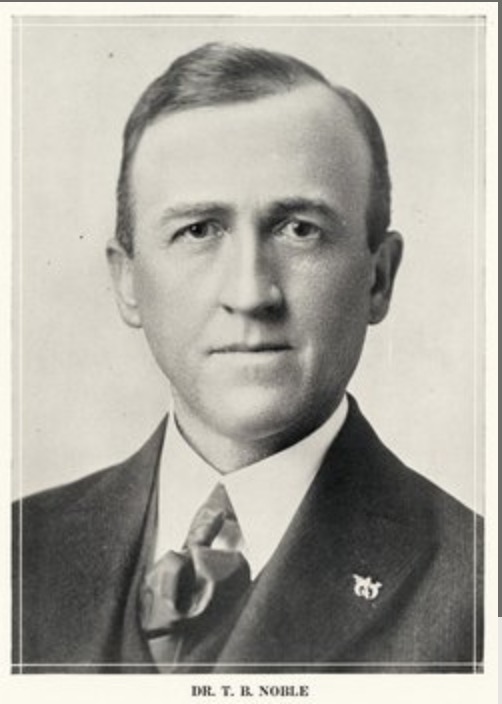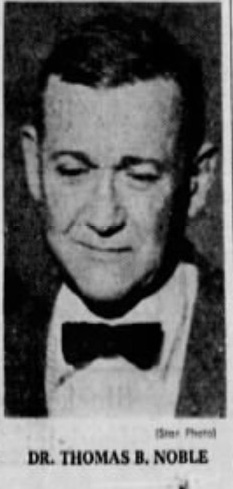Amputation Set by Snowden, c.1858 – 1860 Owned by Dr. Thomas Benjamin Noble
AND TWO SUCCESSIVE GENERATIONS OF NOBLE PHYSICIANS

This is not a contract-issued surgical set, but a good example that a set made for civilian use, such as the one pictured here, even if it had iron-clad provenance linking it to a physician known to have been a surgeon in the Civil War, is not necessarily a “Civil War surgical set”, unless there is documentation that it was definitely used by that surgeon during the war. The set was obtained from a seller representing a descendant of the original owner.
The set has a keyed lock, typical of non-military issued sets. The brass cartouche is blank. It is a smaller set, used exclusively for amputation and not for a variety of surgical procedures. Military-issued sets were usually so marked, with the cartouche (and sometimes instruments) engraved with “U.S.A. Medical Department” or more commonly, “U.S.A. Hospital Department”. It is complete, save for one of the amputation knives. In its place, there is a handle with spring-catch, of the type used with interchangeable blades – this instrument is unmarked. The bone forceps are of the type used in the Wiegand-Snowden period (pre-Civil War), and the swinging latches are typically found on cases in the 1850’s. The blades on the knives are straight and have “beefy” handles, also typical of the 1850’s. The tourniquet with striped canvas strap is typical of the pre-Civil War to Civil War period. This set is a nice representation of a pre-war civilian set, which could have easily been (though was not) used in the Civil War by a contract surgeon of Dr. Noble’s age and experience. This set came directly from the descendants of Dr. Thomas Benjamin Noble (1827 – 1907). Thomas B. Noble was born in Kentucky, the grandson (on both his maternal and paternal sides) of physicians. His father, a farmer, moved to Johnson county, Indiana when he was five years of age. He went to Franklin College and began practicing medicine in Greenwood, Indiana in 1852. In 1863, at age 36, he was on the Civil War Draft Registration list for Johnson county, Indiana.
Three generations of physicians in the Noble family used or owned this set, beginning with Thomas Benjamin Noble.
His son, named Thomas Benjamin Noble, Sr. (1867 – 1950) became a physician and also practiced in Greenwood. His son, Thomas Benjamin Noble, Jr. (1895 – 1958) was a physician-surgeon, famed for his efforts to prevent death by aggressive surgical intervention in cases of acute appendicitis.
THOMAS BENJAMIN NOBLE, M.D. (1827 -1907)

THOMAS B. NOBLE SR., M.D. (1867 -1950)

THOMAS B. NOBLE JR., M.D. (1895 – 1958)

